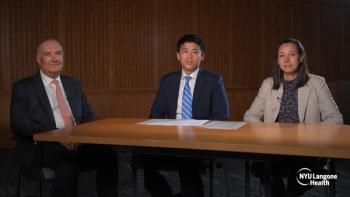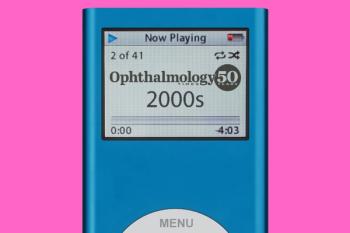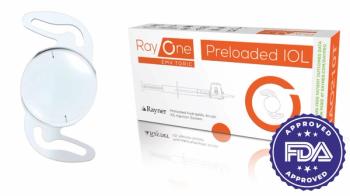
Post-cataract surgery, pulses of longitudinal torsional energy cut endothelial cell loss
Both longitudinal and torsional phacoemulsification using a proprietary system resulted in low corneal endothelial loss 3 months after cataract surgery to remove hard cataracts.
The apparent efficiency of torsional phacoemulsification has been a topic of great interest since its introduction in 2008, according to Dr. Davison, in private practice in Marshalltown and West Des Moines, IA. He explained its mechanism of action:
However, Dr. Davison said, it can happen that the material is so hard that torsional energy cannot emulsify or clear it from the phaco tip's shaft. This results in relatively long periods of unproductive high-vacuum occlusion, as well as relatively inefficient emulsification and aspiration of nuclear material, he said.
In response to this, the manufacturer developed software for its phaco system, which inserts pulses of longitudinal energy within a stream of torsional energy. Dr. Davison described a case in which the interjected pulses of energy were triggered by the vacuum level reaching 90% of the 400 mm pre-set maximum. The pulses cleared nuclear material from the shaft of the phaco tip and prevented long periods of ineffective vacuum interval during the removal of hard nuclear material.
Longitudinal versus torsional
Dr. Davison conducted a study to determine the effect on corneal endothelial cell loss using the longitudinal procedure compared with the torsional procedure with vacuum demand interjection of pulsed longitudinal energy phacoemulsification in the quadrant removal phase on hard cataracts.
The randomized unmasked prospective study included 18 cases with firm cataracts, which were classified as Lens Opacification Classification III (LOCS III) nuclear color value greater than 3.7. Patients were randomly assigned to undergo continuous longitudinal ultrasound or continuous torsional with interjected longitudinal segment pulses during quadrant removal.
The longitudinal pulse interjection was triggered by a 90% threshold of 400 mm Hg vacuum, 10-ms duration, with a longitudinal/torsional ratio of 1. The same technician obtained corneal endothelial cell photographs preoperatively and 3 months postoperatively. Dr. Davison performed all the surgeries using a modified divide-and-conquer technique with 1% sodium hyaluronate and 4% sodium chondroitin sulfate–3% sodium hyaluronate (DuoVisc, Alcon).
"The key to the technique when removing firm lenses is to make the initial cracks and then turn the phaco tip on its side and remove the firmer corners from the material all the way around to create a central bowl," Dr. Davison said. "The material is gathered within the bowl and then removed, which keeps the material away from the corneal endothelium and protects the posterior capsule, especially as the first three quadrants are removed."
Of the 18 cases, eight were treated with the continuous longitudinal procedure and 10 with the torsional-interjected longitudinal procedure. The patient ages and the nuclear densities as measured by LOCS III nuclear color and opalescence were similar in both groups.
Mean preoperative corneal endothelial cell count was 2,409 cells/mm2 for the longitudinal group and 2,459 cells/mm2 for the torsional. At the 3-month postoperative evaluation, the longitudinal group had a mean loss of 106 cells/mm2 , a 4.41% decrease, compared with a mean net gain of 68 cells/mm2 , a 2.79% increase, for the longitudinal interjected group, he said.
The net gain in cells can be observed because of photographic analysis and sampling variations during corneal endothelial cell density studies in which cell losses are very low, especially when using a 50 central cell corneal endothelial counting technique. However, the significant conclusion was that cell losses were very low in both groups, especially considering that they were all cases with harder cataracts, he said.
"This study had its strengths and weaknesses in comparing these two techniques in patients with hard cataracts," Dr. Davison said. "The strengths were the use of the standardized LOCS III grading system and [that] one surgeon performed all of the surgeries using one technique. The weaknesses included the small number of cases and the use of an older endothelial cell camera, which permitted only a 50 cell counting technique.
"However, the cell numbers and standard deviations were similar and the losses very low because of the use of 1% sodium hyaluronate and 4% sodium chondroitin sulfate–3% sodium hyaluronate and the efficiencies of the divide-and-conquer technique," he concluded.
FYI
James Davison, MD E-mail:
Dr. Davison is a consultant to Alcon Laboratories.
Newsletter
Don’t miss out—get Ophthalmology Times updates on the latest clinical advancements and expert interviews, straight to your inbox.






















































.png)


